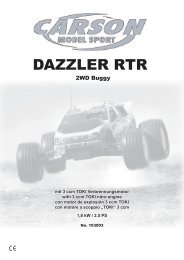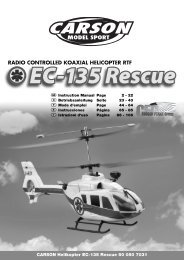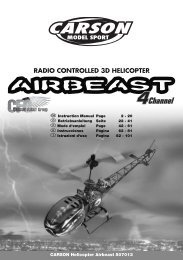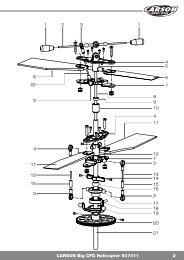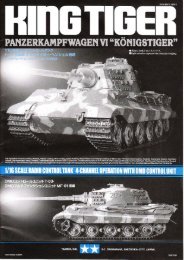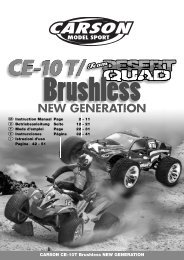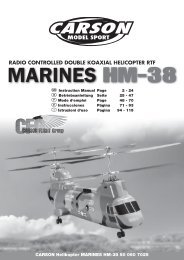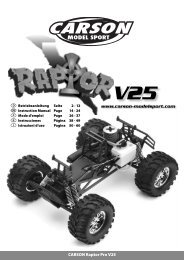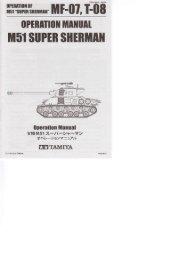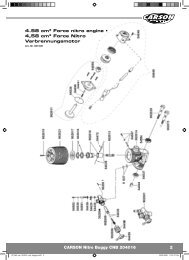APACHE 4 CH - Tamiya
APACHE 4 CH - Tamiya
APACHE 4 CH - Tamiya
- No tags were found...
Create successful ePaper yourself
Turn your PDF publications into a flip-book with our unique Google optimized e-Paper software.
How to change frequenciesMake sure that nobody else is transmitting in the proximity of your frequency!Interfering signals on the same frequency can make you lose control over your model.If you are flying with other RC users, it might be necessary to change the frequency.TransmitterA rapid change of frequencies is possible simply by unplugging an interchangeable crystal on the back of the transmitter andthen plugging in another one.For reasons of operational safety, employ only crystals recommended by the suppliers explicitly for use in your remotecontrol system.TransmitterRemove the holder for the transmitter crystal from the back of the transmitter housing of a switched-off transmitter.Set the crystal replacement with another channel of the same frequency band. Pay attention that the correct crystal isemployed. Transmitter crystals are as a rule characterized with the letters T or TX (T = Transmitter).ReceiverPlug in an interchangeable crystal into the receiver for a rapid change of frequencies.The suitable receiver crystal with the frequency suitable to the transmitter must be labelled with the same channel numberas the transmitter crystal. It additionally bears the identification letter R or RX (R = Receiver).Now take the transmitter and subsequently the receiver into operation and check the functioning of the equipment.Do not mix up the transmitter and receiver crystals!The transmitter and receiver crystals must be of an identical frequency.Make sure that the crystal is fully inserted in the transmitter and receiver, not partially.Corrective actionThe rotor blades of the two principal rotors have the largest influence on the flight characteristics of the helicopter.Very often one can attain a major improvement of flight behaviour simply by exchanging one or more rotor blades. There isan especially serious difference between balanced and non-balanced rotor blades. If the model does not show a balancedflight behaviour, then at first the balancing state of the rotor blades should be inspected and corrected and if necessary therespective blade should be replaced.The track running of the rotor blades also has an influence on the flight behaviour apart from the balancing state. Bothrotor blades of a rotor rotation travel exactly in one plane if their track running is correct. If this is not the case, vibrationsarise which adversely affect the flight behaviour.To check the track running, mark a blade tip with colour and observe the corresponding rotor rotation from the side.If the marked and the unmarked blade apparently “overlap”, then the trackrunning is correct (1).(1)Otherwise you will see both points at different heights (2).(2)18 CARSON Apache 4<strong>CH</strong> 507000 WWW.CARSON-MODELSPORT.COM



